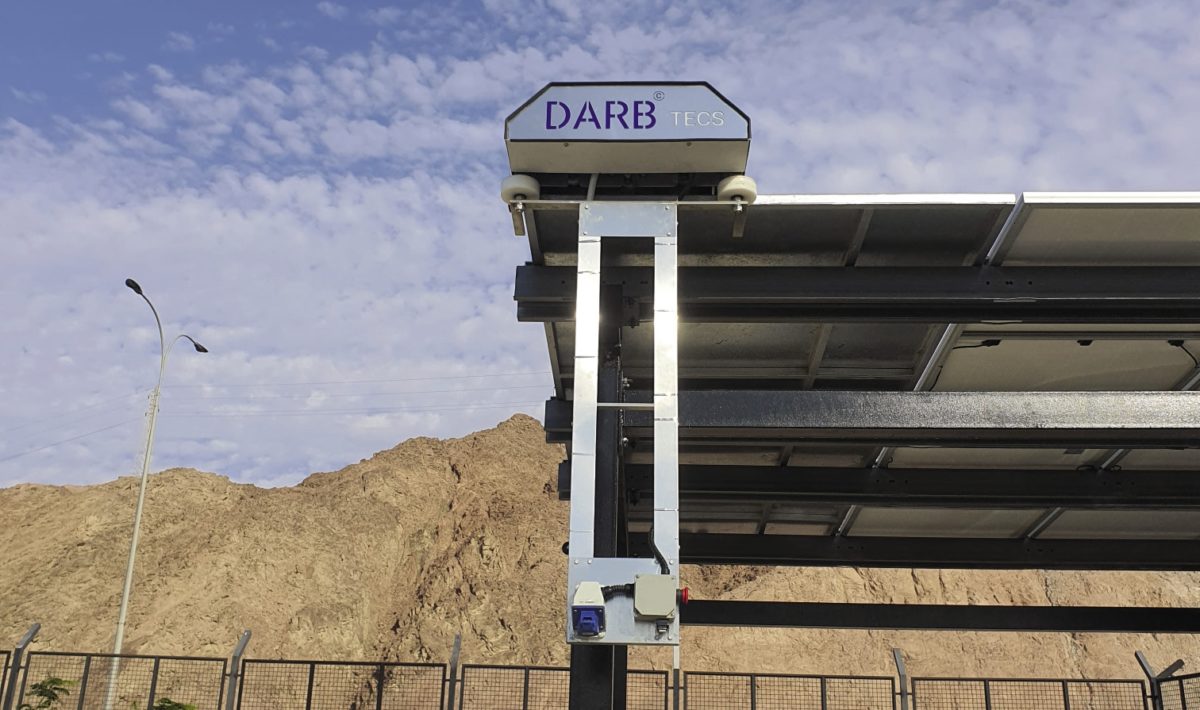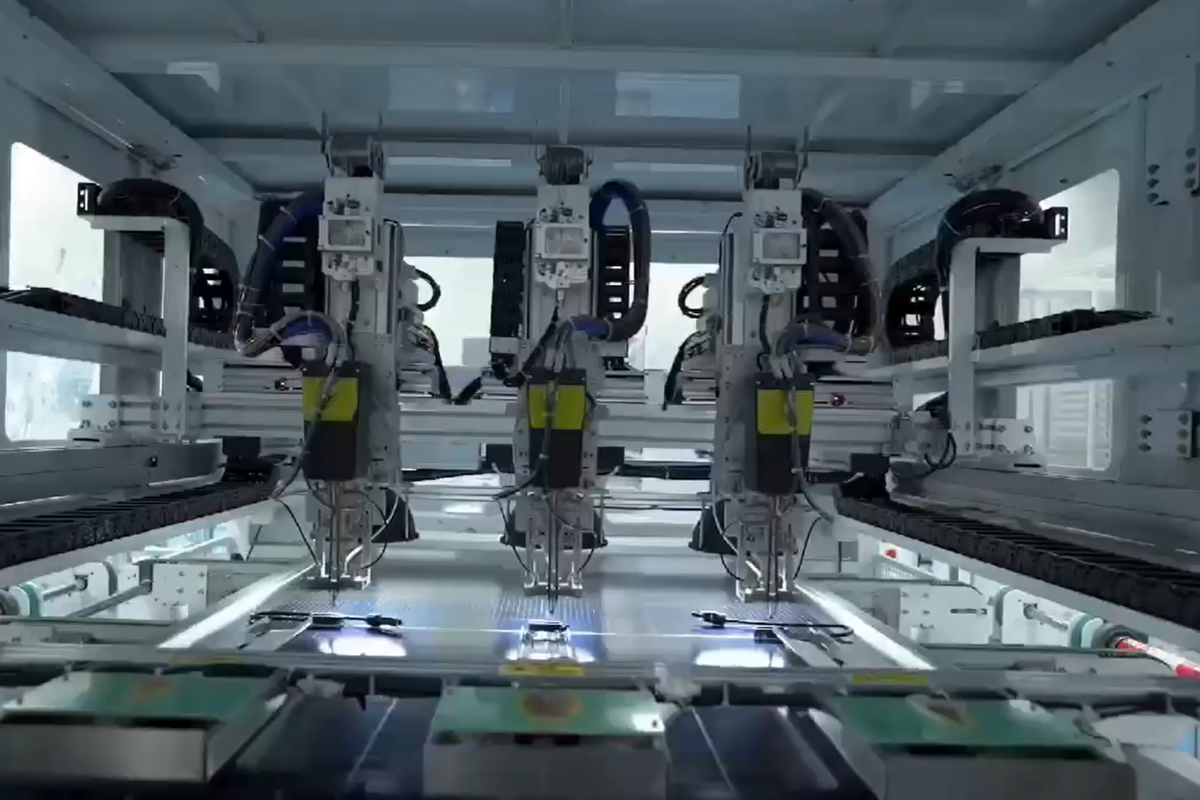From pv magazine 01/2022
For PV power plants, soiling is a highly location-dependent issue, with loss rates due to dust and dirt on solar panels varying from 5% in temperate climates with moderate rainfall, up to as high as 50% in particularly dry and dusty parts of the world.
The most common way to deal with soiling is still manual washing of the panels. However, for large PV power plants, this is an expensive and labor-intensive process. And in the arid regions where soiling presents the biggest problem, water is often in short supply, creating an additional sustainability concern.
Soiling detectors carefully distributed around a PV plant can be a great indicator of how cleaning should be scheduled. Dutch company Kipp & Zonen developed its DustIQ soiling detector, which uses an optical sensor to measure soiling and determine transmission losses for a whole project. DustIQ works independently of the solar irradiation and the sun’s position, and can deliver information on soiling at one-minute resolution.
Dry climates
India, which has an ambitious target of 450GW of cumulative PV installations by 2030, has already seen many large solar plants deployed in arid, dusty regions. And operators in the country are realizing the importance of module cleaning in keeping this capacity fully operational.
Solavio Labs, founded in 2017 by Suraj Mohan and Prashant Goel, designs and manufactures autonomous solar panel cleaning bots that clean solar panels to ensure high energy generation by dry cleaning and servicing. It has received support from the governments of India, Dubai and Canada. “We were inspired by the simple floor-cleaning Roomba, We came up with a solution of autonomous robots to clean solar panels faster and more efficiently. These robots are deployed with our in-house sensor algorithm to take care of obstacles, collision, and accident control,” Mohan told pv magazine. He adds that the brushes on the robots are designed with a patented bristle technology that is both non-abrasive and UV resistant.
The bristles are made from a nylon microfiber similar to those used in toothbrushes, and are designed not to scratch module glass or remove the anti-reflective coating. Solavio’s robot is also carefully designed with weight distribution in mind, to avoid stress and potential cracking of the cells. The robot rests on the module frame rather than the glass surface, touching the module at 20 different points.
Cleaning robots
Jordan, which is already generating almost 20% of its electricity from solar and wind, is another country with big PV ambitions and a dry dusty climate. Studies carried out by local cleaning-robot producer Darbco on some PV projects in the Jordanian desert show that without a cleaning schedule in place, more than 50% of a plant’s output might be lost to soiling. And this can be reduced to 10% with cleaning scheduled once a week, according to the company’s calculations.
Darbco has opted for a wet cleaning process in its robots, as part of a three-stage system. In the first stage, water is used to soften all hard soil and dust particles, and to remove any sticky material. In the second stage, the brushes remove dust with the help of water, which guarantees 99% removal of the dust. The last stage is wiping off the water and any particles on the surface of the module.
The robots have been developed and tested for more than four years in harsh conditions and to clean all types of solar panels. The company claims the approach reduces water usage by 80% compared to manual cleaning.
Money talks
Monitoring is an essential soiling mitigation tool, as it helps to detect extreme soiling conditions and to adapt the cleaning schedule depending on variability of the climatic conditions, or to other exceptional soiling events, such as nearby road or building works. And for larger projects, soiling non-uniformity can be mapped to identify sections that are economically worth cleaning more or less regularly.
Although several mitigation approaches are available, the PV industry’s soiling problem is far from being solved, particularly in high-insolation, arid and semi-arid climates. In 2019, scientists led by German research institute Fraunhofer Center for Silicon Photovoltaics published a research paper, ‘Techno-Economic Assessment of Soiling Losses and Mitigation Strategies for Solar Power Generation,” in Joule.
“Soiling reduces the current global solar power production by at least 3% to 4%, with at least €3 billion to €5 billion annual revenue losses, which could rise to 4% to 7%, and more than €4 billion to €7 billion losses, in 2023,” concluded the study. That situation will be worsened by the rising volume of solar capacity in highly soiling-affected regions such as India and the MENA region.
A case study from German company OTT Hydromet, presented in a pv magazine Webinar earlier this year, sought to visualize the impacts of soiling and benefits of cleaning. This study was done using real soiling data collected from Kipp&Zonen’s DustIQ monitoring system at a project in Almeria, Spain. The size of the plant is 100MW, with a PPA value of $28/MWh. The case study compared different cleaning strategies: no cleaning, manual cleaning, and cleaning with a tractor. It revealed a 1.6% loss from soiling and cleaning in the project’s total revenue under optimal conditions when using the tractor cleaning method, compared to 2.9% with no action and 3.8% when using manual cleaning.
NOMADD, another cleaning robot producer based in Saudi Arabia, has partnered with OTT Hydromet to evaluate product cleaning performance in real desert conditions in another case study. These experiments took place at a test field at the King Abdullah University of Science and Technology (KAUST) in Thuwal, Saudi Arabia. The test field hosts a 100kW PV plant, and represents an ideal environment for testing the efficacy of different module cleaning approaches. Methods of manual cleaning, automated robot cleaning and no cleaning were each evaluated, measuring the short circuit current of a module, combined with DustIQ mounted on the side.
Measurements have been taken over one month from November to December 2019. The data month was acquired and processed to calculate the soiling ratio of the PV modules. The study revealed little difference in efficacy between manual cleaning and robot cleaning, but clearly showed that taking no action will quickly result in losses as high as 6%.
Yazeed Al-Mousa
This content is protected by copyright and may not be reused. If you want to cooperate with us and would like to reuse some of our content, please contact: editors@pv-magazine.com.








By submitting this form you agree to pv magazine using your data for the purposes of publishing your comment.
Your personal data will only be disclosed or otherwise transmitted to third parties for the purposes of spam filtering or if this is necessary for technical maintenance of the website. Any other transfer to third parties will not take place unless this is justified on the basis of applicable data protection regulations or if pv magazine is legally obliged to do so.
You may revoke this consent at any time with effect for the future, in which case your personal data will be deleted immediately. Otherwise, your data will be deleted if pv magazine has processed your request or the purpose of data storage is fulfilled.
Further information on data privacy can be found in our Data Protection Policy.